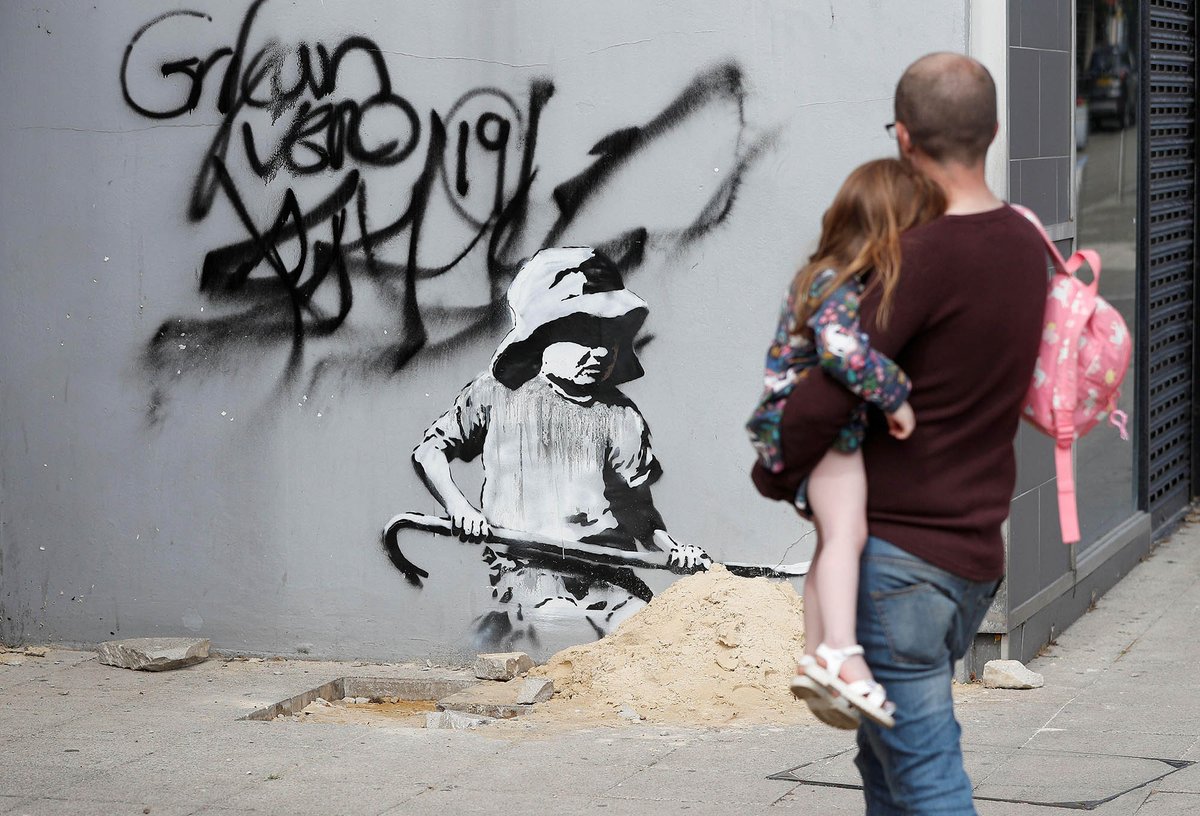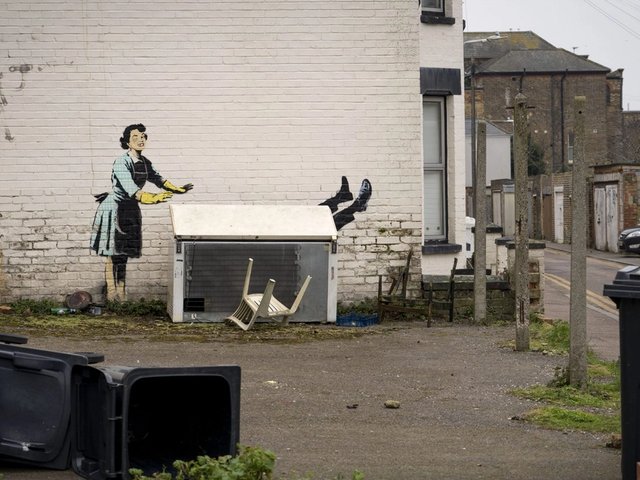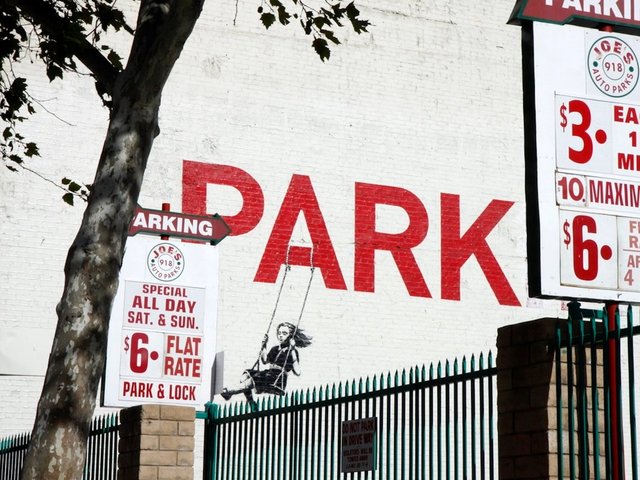A Banksy mural sprayed on the wall of an electrical store in the coastal town of Lowestoft, Suffolk, in the East Anglia region of England last summer was unceremoniously torn down and is believed to have been sold to a private buyer.
The mural, which depicted a small child wearing a floppy bucket hat, brandishing a crowbar with both hands and originally featured a real sandcastle, was one of ten that the artist bestowed upon the towns of Great Yarmouth, Gorleston and Lowestoft, the sleepy vacation spots which had jointly put in a bid for the title of UK City of Culture. Some viewed the murals, which the artist made in August during what he called his “great British spraycation”, as Banksy’s not-so-discreet endorsement for the towns’ cultural aspirations. Many were disappointed when the owners of the electrical shop on which the mural was sprayed decided to remove the wall in November and sell the work, which along with the other murals has bolstered the town’s tourism.
“Lowestoft was given a gift by Banksy; a golden opportunity to bring thousands of tourists into the town and help the local economy. It’s a missed opportunity,” the Essex art dealer John Brandler, who owns several Banksy works, told the BBC. Nasima Begum, the Lowestoft deputy town mayor, called the mural’s removal “a real shame”, adding that the art attracted a slew of visitors, and that she was “sure Banksy didn’t put the work there in the hope that someone could profit from it.”
The work had been consigned to Julien’s Auctions in California last fall, with a reported estimate of $200,000-$400,000. But according to Darren Julien, president of the auction house, the seller pulled out of the contract last week after selling the work privately for an undisclosed price
“I think it would have sold for several million dollars,” Julien told The Art Newspaper, but the seller was “uneducated as to the auction process” and how “a conservative pre-sale estimate [is] the key [to] the success of an auction.” Julien added that, while the seller was under contract with the auction house, “there were a lot of red flags” and “it’s not worth the hassle of working with someone who is not trustworthy”.
While the owners of buildings Banksy adorns with mural frequently try to sell them, the costly process of removal and the artist’s authentication service Pest Control’s policy of not issuing certificates of authenticity for such works make such attempts something of a gamble. However, as the secondary market for the artist’s prints and unique works has soared in recent years, the potential payoff may be increasingly worth the trouble for those who find themselves in possession of a Banksy mural.





